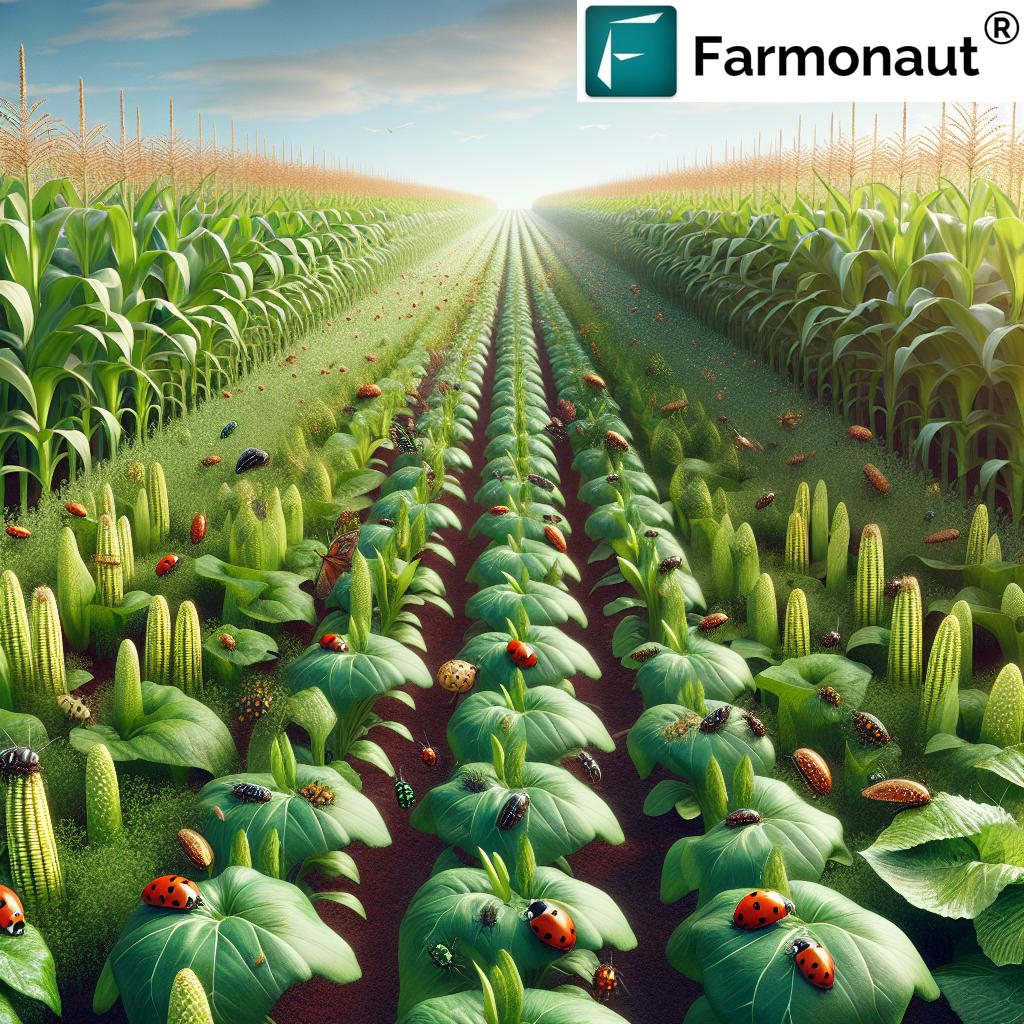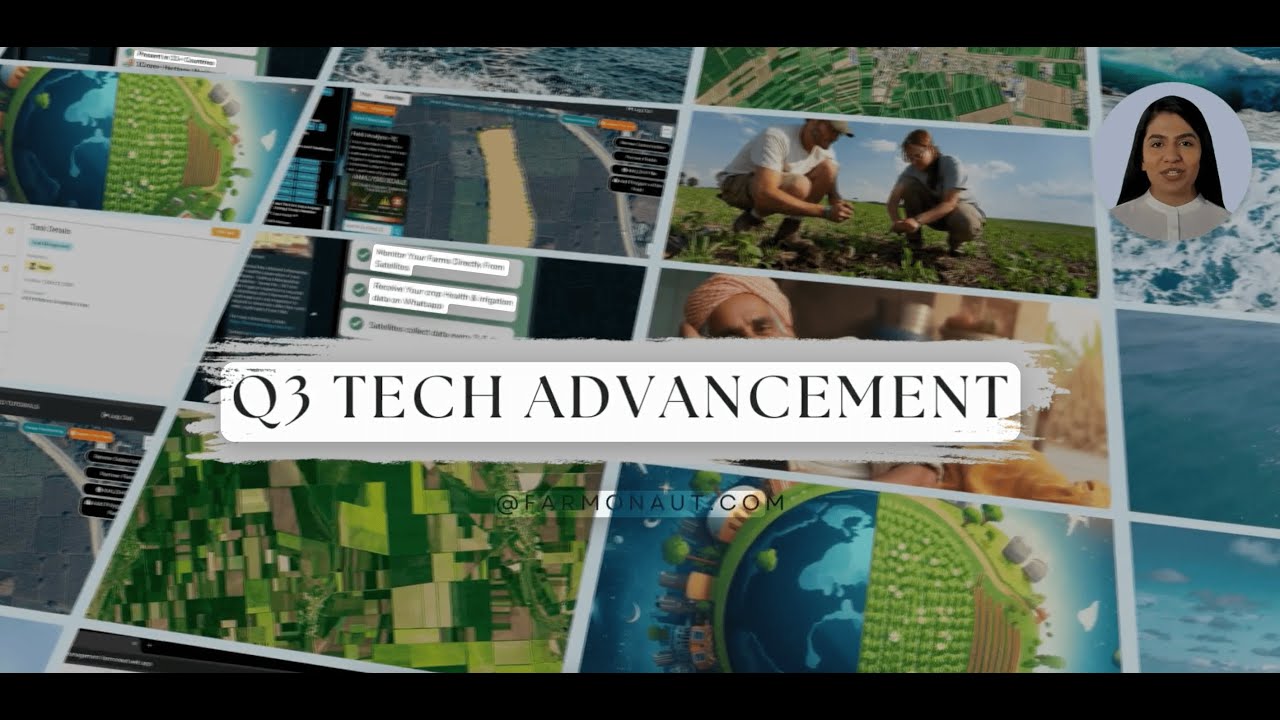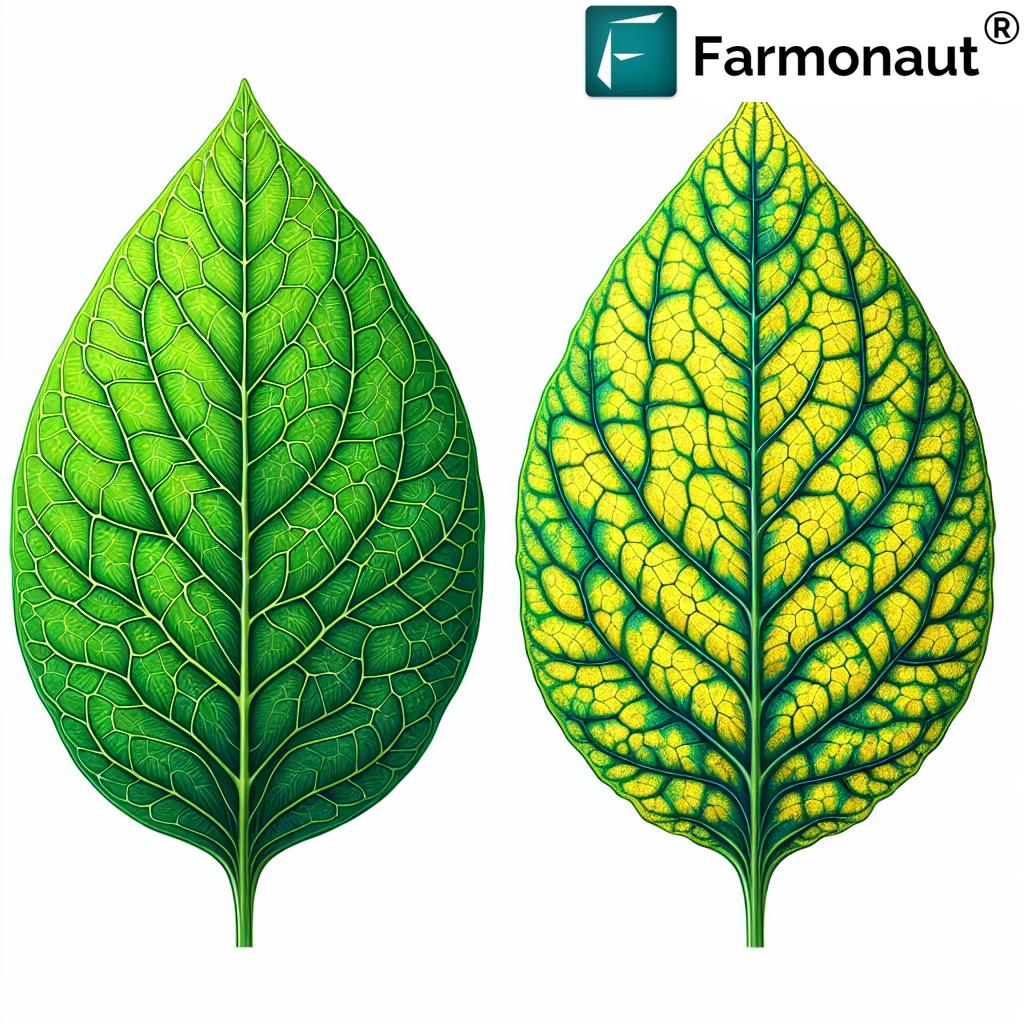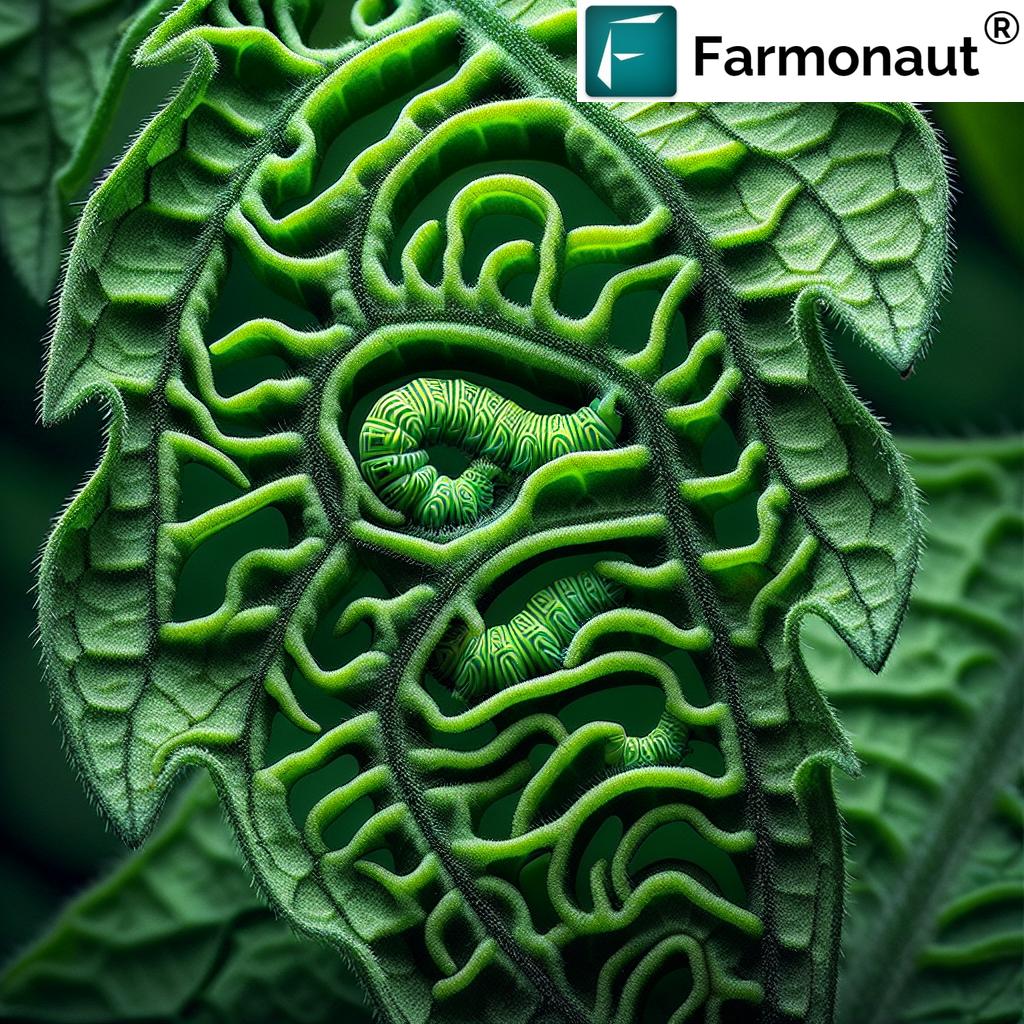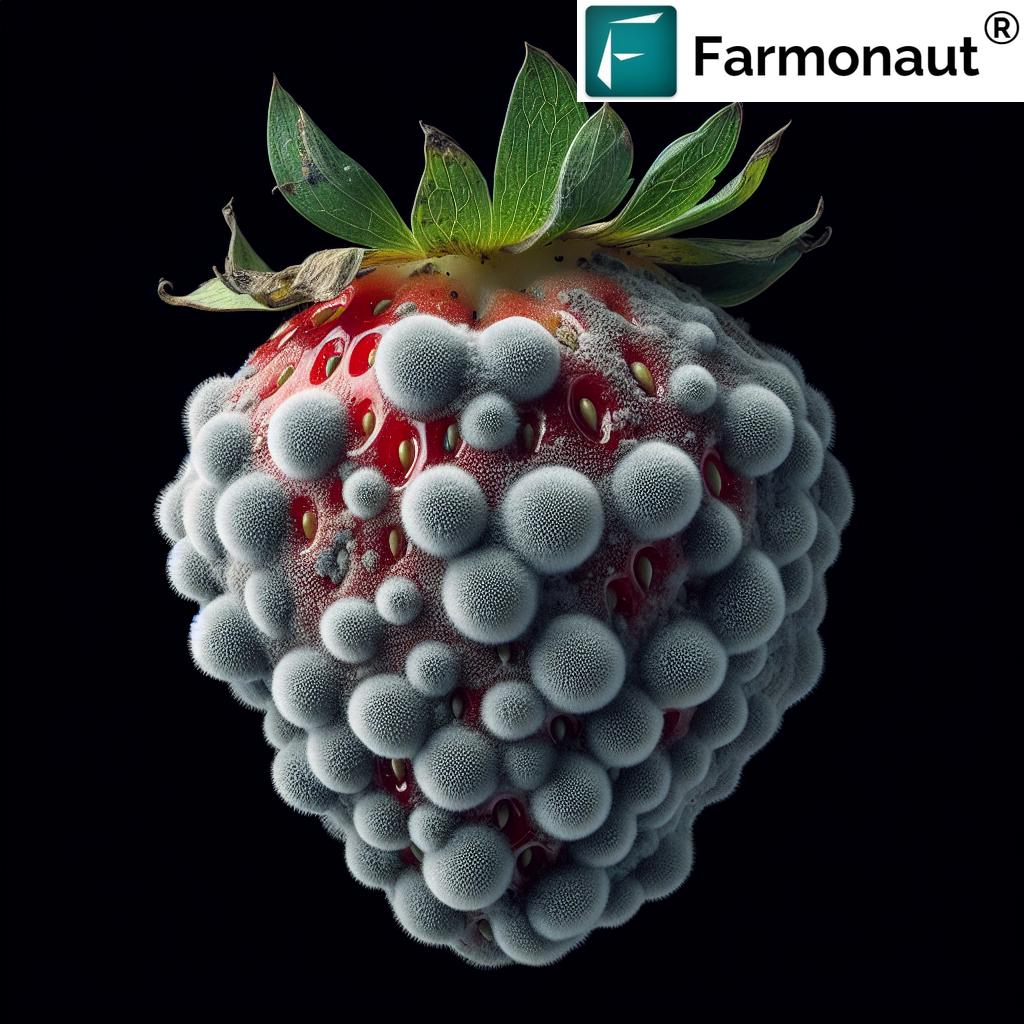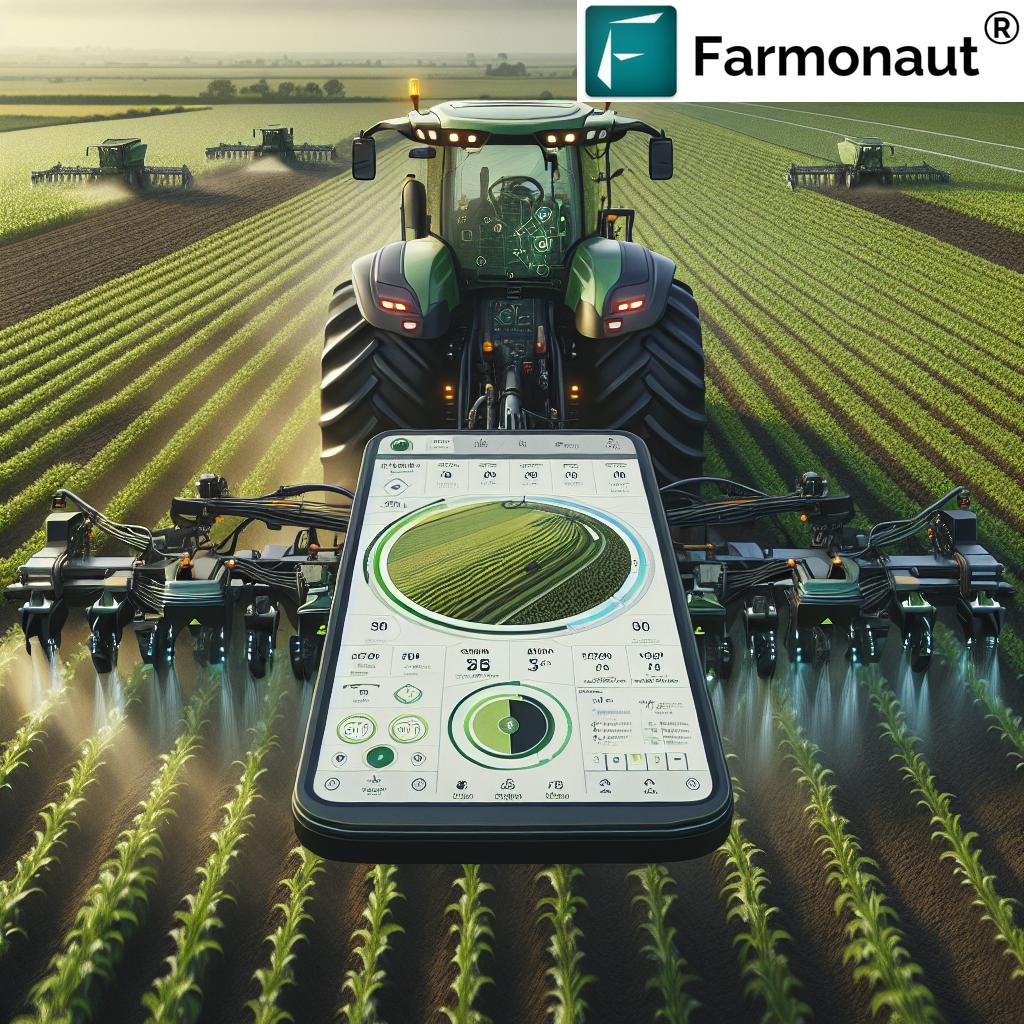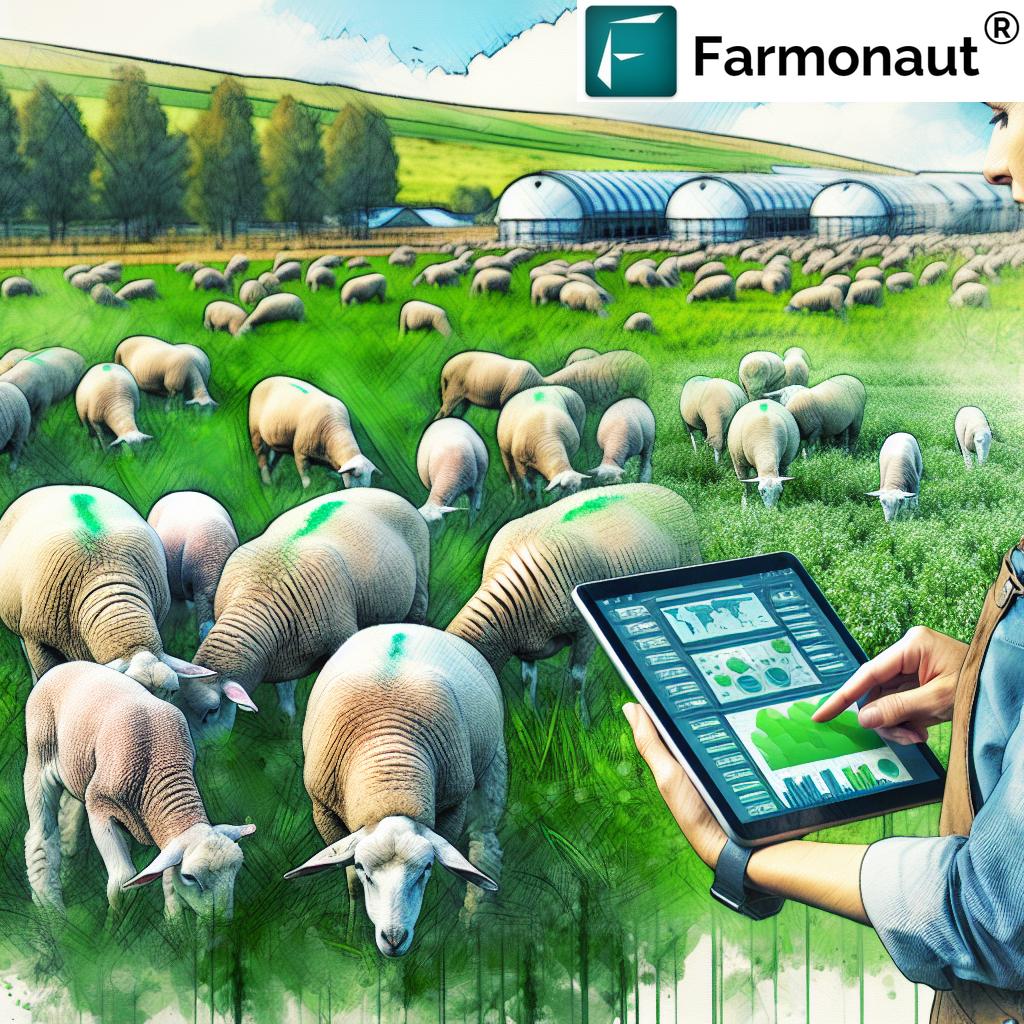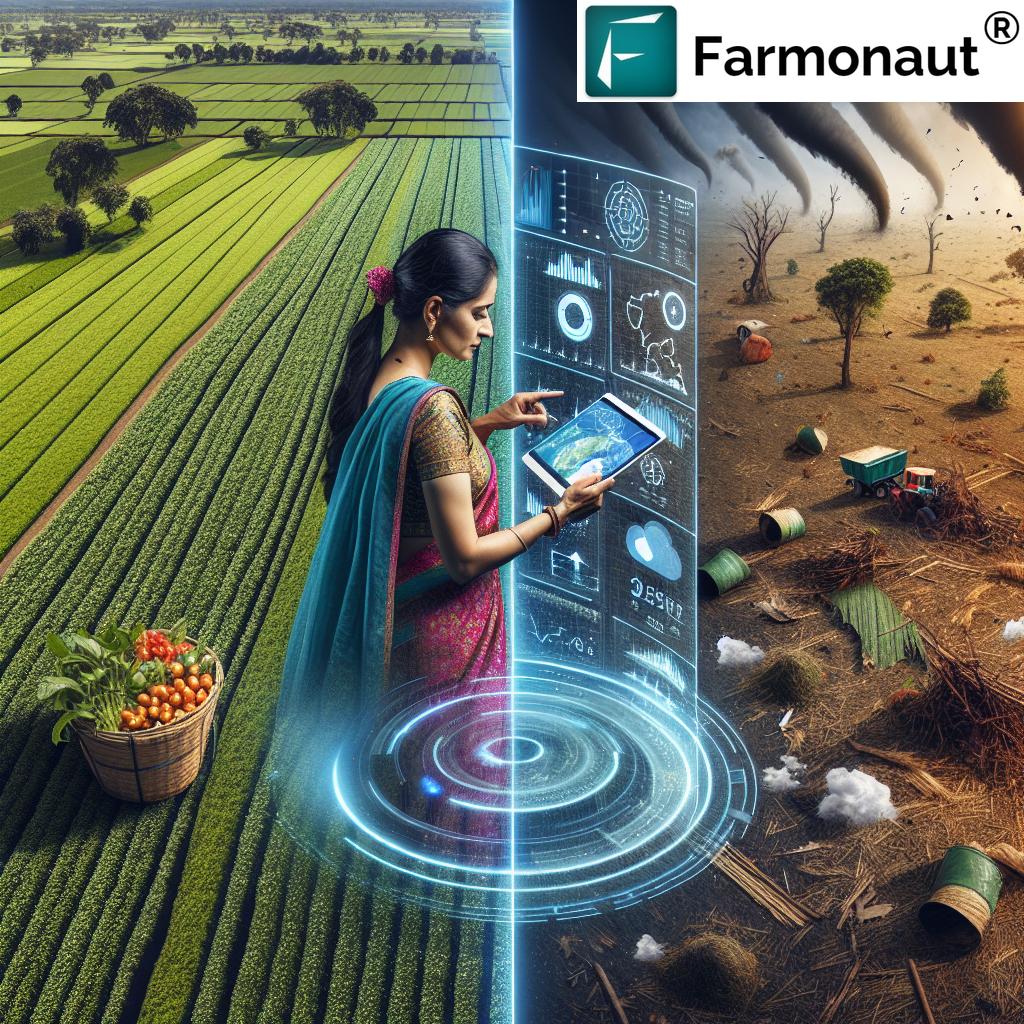Advanced Pest Control: 7 Game-Changers You Must See
Meta Description: Explore advanced pest control in agriculture through biological control, precision farming, drones, and AI for sustainable, effective farm pest management.
- Introduction: Rethinking Pest Control in Agriculture
- 1. Biological Pest Control
- 2. Integrated Pest Management (IPM): A Holistic Approach
- 3. Precision Agriculture Pest Control: Technology in Action
- 4. Push–Pull Strategy: Ecological Balancing
- 5. Biosolarization: Harnessing Nature’s Heat
- 6. Sterile Insect Technique (SIT): Redefining Biological Control
- 7. AI and Machine Learning: Smart Pest Management
- Drones for Pest Control & Aerial Surveillance
- Smart Sensors & IoT: Real-Time Pest Monitoring
- Comparative Feature-Effectiveness Table
- Farmonaut’s Advanced, Affordable Solutions
- FAQ: Advanced Pest Management
- Conclusion
Introduction: Rethinking Pest Control in Agriculture
Pest control in agriculture is at a transformative juncture. For decades, traditional approaches predominantly involved chemical pesticides to combat pests and protect crops. While these chemical methods offered short-term solutions, they also contributed to environmental degradation, biodiversity loss, declining soil health, and even risks to human health. In today’s science-driven world of farming, the challenge is clear — we need advanced, effective, and sustainable pest management strategies that optimize crop production while minimizing environmental impact.
The evolution of pest management in agriculture encompasses a rich range of innovative methods: biological pest control, integrated pest management (IPM), precision agriculture, push–pull strategies, biosolarization, the sterile insect technique (SIT), as well as the adoption of cutting-edge technologies such as AI, drones, smart sensors, and IoT. In this detailed exploration, we guide you through these seven game-changing pest control innovations—each designed to tackle agricultural pest populations more effectively and sustainably than ever before.
As part of this agricultural revolution, Farmonaut leads with accessible technology, integrating satellite data, AI, blockchain, and analytics to empower farmers with actionable insights—helping us manage crop health, monitor pest populations, optimize interventions, and reduce reliance on chemicals.
1. Biological Pest Control: Harnessing Nature for Agriculture
Biological pest control stands at the forefront of advanced pest management methods. It integrates natural enemies—predators, parasites, and pathogens—into our farming and forestry systems, actively targeting and reducing pest populations while maintaining ecological balance.
How Biological Pest Control Works
- We introduce beneficial natural predators (like ladybugs for aphid control) or parasitic species (such as certain wasps targeting caterpillars) into affected agricultural environments.
- The use of entomopathogenic fungi—notably Beauveria bassiana and Metarhizium species—has proven highly effective. These fungi infect and kill specific insect pests (e.g., whiteflies, thrips, aphids, weevils, beetles, locusts, grasshoppers, spider mites) without harming beneficial insects or the broader environment.
- Biological agents are selected based on their ability to specifically target pest species—helping us avoid negative side effects on beneficial organisms.
When applied thoughtfully, biological control methods significantly reduce pesticide use in farming (as much as 80% compared to traditional practices), supporting sustainable agriculture, protecting beneficial species, and promoting healthier ecosystems.
Examples of Biological Agents:
- Beauveria bassiana: Effective against a broad spectrum of insect pests.
- Metarhizium anisopliae: Targets beetles, locusts, grasshoppers.
- Lady beetles (Coccinellidae): Predate on soft-bodied pests like aphids and whiteflies.
- Trichogramma wasps: Parasitize the eggs of moths and butterflies.
Biological pest control minimizes our reliance on chemical pesticides, aligns with sustainable pest control methods, and serves as a foundation for environmentally friendly pest management strategies globally.
2. Integrated Pest Management (IPM): A Holistic Approach
Integrated pest management (IPM) is a holistic approach that combines biological, cultural, physical, and chemical methods to manage pests in a way that is both effective and sustainable in agricultural and forestry ecosystems. Rather than relying solely on chemicals, IPM enables us to work in harmony with nature, adopting a toolkit of solutions that are tailored, targeted, and data-driven.
- Monitoring and Action Thresholds: With IPM, we regularly monitor pest populations through scouting, sensors, or remote data. Interventions are only taken when pest levels exceed well-defined economic or ecological thresholds—this minimizes unnecessary pesticide applications and environmental impact.
- Combining Multiple Control Methods: Biological control (like predatory mites), pheromone traps, cultural techniques (e.g., crop rotation, intercropping), and physical barriers are integrated to suppress pest populations.
- Selective and Targeted Chemical Use: When chemicals are necessary, they are used selectively and only at specific times, reducing negative effects on beneficial insects and the environment.
A classic example is apple orchards: We may release predatory mites to manage spider mites, deploy pheromone traps to monitor pest activity, and apply pesticide interventions only when absolutely necessary.
By minimizing reliance on chemical pesticides and integrating various techniques, IPM remains one of agriculture’s most effective and sustainable pest control strategies.
3. Precision Agriculture Pest Control: Technology in Action
Precision agriculture pest control leverages data analytics, GPS, sensors, and satellite imagery to monitor and manage pest populations with pinpoint accuracy. This technology revolution is enabled by platforms like Farmonaut, which make affordable and accessible precision solutions possible for farmers worldwide.
How Precision Agriculture Works in Pest Management
- Satellite-Based Crop Health Monitoring: Platforms like Farmonaut use multispectral satellite images to monitor crop health, soil moisture, and pest or disease symptoms in real-time. By identifying stressed or infested areas, farmers can take early and targeted actions.
- Real-Time Data for Targeted Interventions: Drones, field sensors, and AI-based systems help us map fields, detect hotspots of pest presence, and apply interventions exactly where needed (reducing overall pesticide usage and environmental impact).
- Automated & Remote Decision-Making: By integrating weather, satellite, and sensor data, precision ag enables automated alerts for pest outbreaks, customized action plans, and synchronized resource management.
This approach reduces input costs, improves crop yields, and drives sustainable farming practices across both smallholder and large-scale farms.
Managing multiple fields or plantations? Farmonaut’s Large Scale Farm Management Platform delivers real-time, satellite-driven crop health analytics, resource planning, and fleet tracking—all to minimize losses from pests and optimize input use over vast agricultural lands.
Comparative Feature-Effectiveness Table for Advanced Pest Control
| Pest Control Method | Technology/Innovation | Estimated Effectiveness (%) | Estimated Cost (USD/ha) | Environmental Impact |
|---|---|---|---|---|
| Biological Pest Control | Natural predators (e.g., ladybugs), entomopathogenic fungi, parasitoids | 65–90% | 20–200 | Low |
| Integrated Pest Management (IPM) | Multi-tool toolkit (biological, physical, targeted chemicals, monitoring) | 70–95% | 50–250 | Low–Medium |
| Precision Agriculture | Satellite monitoring, field sensors, AI-powered analytics, drones | 80–96% | 30–350 | Low |
| Push–Pull Strategy | Repellent and trap plants for intercropping | 65–85% | 25–150 | Low |
| Biosolarization | Solarization + organic amendments, plastic mulch | 70–90% | 60–160 | Low to Medium |
| Sterile Insect Technique (SIT) | Mass releasing sterilized pest insects | 55–98% | 250–700 | Low |
| AI & Machine Learning | AI-based pest identification, outbreak prediction, advisory | 80–99% | 50–350 | Low |
| Drones for Pest Control | High-resolution mapping, targeted spray/release, surveillance | 75–94% | 50–400 | Low |
| Smart Sensors & IoT | Real-time environmental + pest monitoring, remote alerts | 78–96% | 40–300 | Low |
4. Push–Pull Strategy: Ecological Balancing in Pest Control
The push–pull strategy offers an ecological, low-chemical approach for farmers and agronomists seeking pest control in agriculture that supports biodiversity and soil health. This intercropping method ingeniously deploys two types of plants:
- Repellent “Push” Plants: Intercropped with the main crop (e.g., Desmodium between maize rows), these plants naturally deter pests away from the economic crop.
- Trap “Pull” Plants: Planted at the field perimeter (like Napier grass), they attract and trap pests, preventing migration back into main crops.
This method is especially effective against difficult pests such as maize stem borers and parasitic plants like Striga. Beyond pest management, it fosters improved soil fertility, enhances biodiversity, and reduces chemical pesticide use—making it a true champion of sustainable farming.
The success of the push–pull strategy is illustrated extensively in African maize fields, but the approach adapts well to various crops, climates, and local pest pressures.
5. Biosolarization: Harnessing Nature’s Heat for Sustainable Pest Management
Biosolarization is an advanced variation of soil solarization that combines solar heating with the addition of organic materials (like compost) to control soil-borne pests, nematodes, fungi, and weed seeds. This environmentally friendly method is increasingly popular for its affordability, effectiveness, and minimal chemical inputs.
How Biosolarization Works:
- Soil is amended with organic matter (compost, manure) and irrigated.
- The area is covered with transparent plastic mulch, trapping the sun’s heat—raising soil temperature, and triggering decomposition of organic matter.
- This process generates gases toxic to soil-borne pests, destroying nematodes, harmful fungi, and weed seeds without synthetic chemicals.
Biosolarization research has shown great success in strawberry and vegetable production (Spain, California), delivering an effective and scalable solution to reduce chemical soil fumigants. It improves soil health, increases microbial biodiversity, and can be used on both small and large-scale farms.
6. Sterile Insect Technique (SIT): Redefining Biological Control
The Sterile Insect Technique (SIT) is an advanced biological strategy utilized for targeted control of specific pest populations. It involves the mass production and release of sterilized male insects (often through irradiation or genetic means) into infested environments. As these sterile males mate with wild females, no offspring are produced, leading to a steady and substantial decline in pest numbers over time.
Key Features & Benefits of SIT:
- Species-Specific: Only affects the targeted pest species, minimizing environmental and non-target impacts.
- No Toxic Residues: No chemical residues are left in the environment or on crops.
- Integrated Approach: Often used alongside IPM or other control strategies for persistent pests like the Mediterranean fruit fly, screwworm, or tsetse fly.
While initial investment for infrastructure is high, the long-term impact and sustainability of SIT make it an invaluable tool in modern integrated pest management programs.
7. AI and Machine Learning: Smart Pest Management for the Digital Age
The integration of artificial intelligence (AI) in agricultural pest management is revolutionizing how we detect, analyze, and respond to pest threats in farming and forestry. Machine learning algorithms and computer vision systems now empower us to:
- Identify pest species via image recognition—automatically flagging problems from camera or drone imagery.
- Analyze vast data sources: Harness data from satellites, sensors, and weather models to predict outbreaks before they become severe.
- Customize recommendations: AI systems interpret field-level data and suggest targeted interventions, minimizing inputs and maximizing results.
For example, Farmonaut’s Jeevn AI advisory system provides growers with real-time, satellite-driven crop health alerts, weather analysis, and expert input recommendations for optimal timing of pest control interventions. This data-driven approach promotes efficient, environmentally friendly pest management, safeguarding both crop yields and natural resources.
AI in agricultural pest management is not theoretical—it is already helping farmers improve decision-making, reduce waste, and achieve truly sustainable pest control methods worldwide.
For businesses and consumers alike, transparency is vital. Farmonaut’s Blockchain-Based Product Traceability solution guarantees secure documentation—from farm to shelf—helping us build trust and prove the authenticity of agricultural products in the supply chain.
Drones for Pest Control & Aerial Surveillance: Changing the Game
Drones are rapidly evolving from a novelty to a farm necessity in pest control in agriculture. These agile aerial vehicles, equipped with high-resolution cameras and sensors, deliver real-time images and detailed maps of crop fields—enabling early detection of pest infestations, disease outbreaks, and stress zones.
Key Innovations for Drones in Pest Management:
- Targeted Applications: Drones can apply pesticides or release biological control agents precisely where needed, reducing chemical drift and minimizing non-target exposure.
- Automated Surveillance: Large fields (rice paddies in India, for example) are monitored efficiently, identifying hotspots for targeted intervention and saving labor costs.
- Data Integration: Drones sync with farm management software and AI platforms (like Farmonaut) to optimize resource allocation and facilitate documentation for regulatory compliance.
The future? Drones for pest control will continue to expand, reducing pesticide use in farming, cutting costs, and driving more sustainable agricultural practices.
Interested in even deeper monitoring?
Farmonaut also provides robust API infrastructure for integrating satellite and weather data into your own applications or research.
Access the free API here, and get started with the API Developer Docs.
Scale your pest management and optimize operations with Farmonaut’s Fleet & Resource Management Tools. It lets us monitor field crews, machinery, and logistics in real time—delivering safer, more effective field interventions with fewer resources.
Smart Sensors for Pest Monitoring & IoT: Real-Time Insights
Modern smart sensors and IoT technologies push the boundaries of real-time, data-driven pest control in agriculture. Here’s how we use them to optimize interventions and minimize pesticide use:
- Continuous Monitoring: IoT-based sensors track temperature, humidity, and other climate factors that influence pest emergence and population levels.
- Automated Alerts: As soon as sensors identify unusual pest activity or unfavorable environmental trends, they trigger instant alerts, empowering us to act before infestations spread.
- Targeted Application & Resource Efficiency: Interventions—like deploying beneficial insects or applying pesticides—can be precisely timed and localized, resulting in 25% reduction in chemical use and up to a 12% increase in crop yields.
This approach offers a seamless, automated bridge between emerging threats and measured response, empowering smarter, more sustainable pest management at any farm scale.
In today’s world, measuring and minimizing your farm’s carbon footprint is as crucial as pest control itself. Farmonaut’s Carbon Footprinting Solution delivers accurate, real-time emission tracking, so we can make data-driven decisions that protect profits and the planet.
Farmonaut’s Crop Loan and Insurance Platform utilizes satellite data to verify crop health—helping farmers access fair financing and insurance coverage while reducing risks of fraud for financial providers.
Stay ahead of pests and optimize resource use with Farmonaut’s Crop, Plantation & Forest Advisory—your go-to satellite and AI-driven platform for real-time health monitoring across all environments.
Ready to Revolutionize Pest Control? Start with Farmonaut!
Frequently Asked Questions (FAQ) About Advanced Pest Control in Agriculture
Conclusion: The Future of Sustainable Pest Management
As we move forward in agriculture, it’s clear that the future of pest control depends on our willingness to innovate and integrate multiple advanced, environmentally friendly, and data-driven approaches. Whether through biological control (like beneficial insects and Beauveria bassiana), integrated pest management, precision agriculture, or the deployment of drones, AI, sensors, and IoT, each method empowers us to manage pests more effectively while minimizing environmental impact.
The holistic, science-backed strategies explored here—from biosolarization and SIT to smart monitoring solutions—not only reduce pesticide use in farming but also enhance soil health, foster biodiversity, protect human health, and optimize farm productivity.
By adopting these transformative methods and leveraging platforms like Farmonaut—which merges the best in satellite remote sensing, artificial intelligence, and sustainability analytics—farmers, agribusinesses, and governments worldwide are equipped to meet the pressing challenge of sustainable, effective pest management for years to come.





